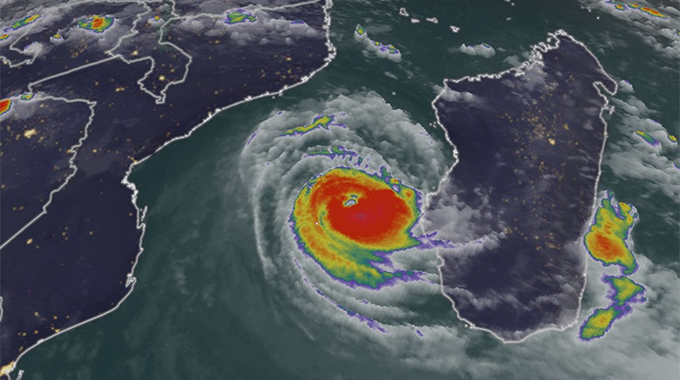EDITORIAL COMMENT : Freddy, our response generate regional lessons

The decision by Cabinet to send prompt emergency aid to Malawi to help sustain the many thousands of families made homeless with their possessions destroyed by Cyclone Freddy shows that the ties that bind the people of Southern Africa are continually strengthening.
Pressed by President Mnangagwa to come up with an effective response to Malawi’s plea for help, Zimbabwe is sending a critical package of supplies: mealie meal, cooking oil, blankets, cabin panels, some stationery so schoolchildren can start learning, and basic hygiene products, sanitiser and bath soaps, which can help prevent the bad cholera outbreak getting worse in cyclone-damaged areas.
The support consists entirely of products made in Zimbabwe, and is dominated by the bulky items that need to be delivered by truck.
Malawi will be getting more wide-ranging support, much coming by air, but the things we are sending need a truck and we are basically next door so can get it there promptly.
The prompt response is as important as the effective response. Malawi has a functional government and systems, but these need back-up in the immediate aftermath of the cyclone, while the authorities mobilise resources and communities put their lives back together.
Zimbabweans will remember the support we gave our own badly hit areas when Cyclone Idai struck, and the support we received from many well wishers in the region and beyond.
It meant the Government could cope more quickly as it moved in emergency aid, and it meant that the people whose homes and food supplies had been destroyed were able to replace the basic possessions more rapidly.
A lot of the longer term support from the Government for these areas was it ensure that we rebuilt better, so that when the next cyclone hits the area, and it will one day, the communities are a lot less vulnerable.
Some replacement housing has had to be resited, for example, so that if there are serious flash floods families are not washed away. No doubt Malawi will be doing the same but in the immediate aftermath it has asked for backing.
Cyclones are becoming more common and more violent, on average, thanks to global warming but the really serious damage from any particular cyclone tends to be close to the eye of the storm, although those vast swirls of cloud revolving around that eye will affect far wider areas. But the serious damage and flooding is often localised.
Those of us who can now be affected have been building our capacity to respond, both for the moderate general damage and the intense localised damage, and the Freddy strike on Malawi and the resulting regional response open the door to all of us co-operating more to cope with the really intense localised path of the eye of the cyclone.
Such a commitment would allow the most rapid support to the worst affected communities, largely in a fairly small area, when that support is most valuable.
SADC has moved a long way from the early days when it was more talk and less action to become an ever more effective regional organisation, and disaster response and recovery can easily be brought under its wing as we continue to build an ever more effective band of brothers and sisters and in our region and be ready to support each other as we grow together.
We can also learn from each other, as well as from experience. The experience learning has been important in Zimbabwe.
We used to get the tail end of a cyclone about once a decade and often this just brought some welcome rain and just moderate damage.
We coped without serious difficulty using the same response we made to less intense storms that still brought flash floods and some high winds.
Cyclone Idai, easily the worst cyclone hitting this country in living memory, showed us we needed to do a lot more to be ready, and a whole far more effective disaster co-ordination and response plan was implemented.
This relies on everyone who normally do other things to know what to do in an emergency, ensuring that community leadership especially can warn and mobilise, and having pre-positioned emergency supplies in place.
Freddy showed that we need to have extra care, because of the record-breaking long life of that cyclone and behaviour that did not really fit previous experience.
It hit southern Mozambique, drifted inland and touched Zimbabwe and South Africa, swung back out to sea, drifted north, hit northern Mozambique and then swung inland and hit Malawi.
Meteorologists told us what was happening and tried to work out the probable routes, but kept having to update their forecasts as Freddy did not follow the average patterns.
This unpredictability explains why the Zimbabwean alerts were so necessary, as that cyclone could have swung inland into Zimbabwe, rather than Malawi.
Even so the swirling clouds did minor damage in the southern Eastern Highlands in the first pass and a bit more in the northern Eastern Highlands on the second.
This sort of response probably needs to be developed more regionally, tying together the national responses at least to the extent that disaster co-ordinators are talking to each other and where possible can back each other up.
One large pool of experience appears to be in Mozambique, possibly because every Indian Ocean cyclone that moves west will hit that country, and hit it at full intensity.
So they have been developing ways of coping, and as that country develops the communities seem to be thinking how they should build and develop to cope with a cyclone.
Zimbabwe now knows a lot about how cyclones can cause more than expected damage as they move inland, largely because our eastern border is a range of mountains that gets the full force and significantly extra rainfall from the altitude effects.
Malawi can now add in some special problems. We need to learn from each other so when the cyclone that is worse than Idai and more unpredictable than Freddy rides in, we can all survive and cope really well.










Comments